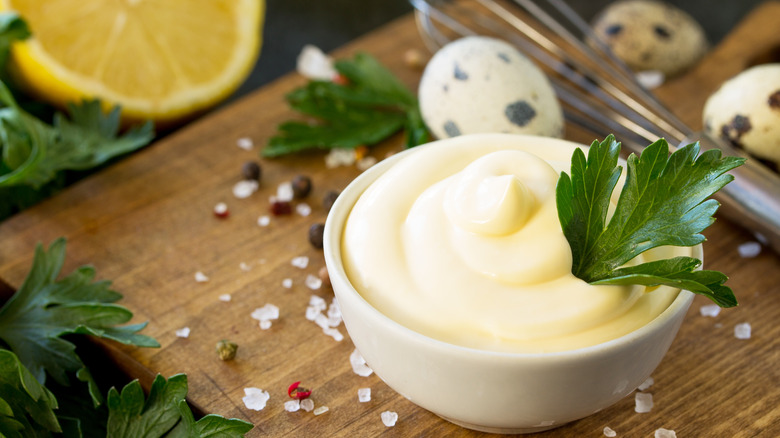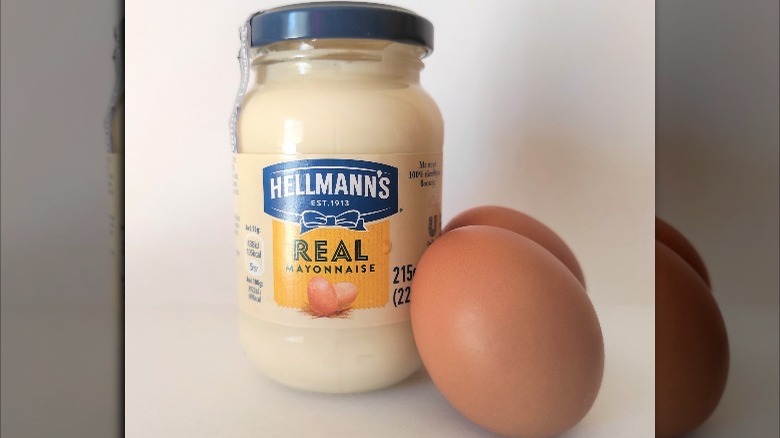The Mysterious Origins Of Mayonnaise
One of the world's most ubiquitous — and polarizing — condiments, mayonnaise has been slathered on sandwiches and used to bind tuna and chicken salads for generations. It's also rather simple to make at home with common ingredients. Verywell Fit notes that the emulsion of egg yolk, oil, and vinegar or lemon juice is the best-selling condiment in North America. But when and how was it invented? And by whom?
According to Kewpie Shop, French marshal Duc de Richelieu ate an early version of mayonnaise in Minorca, Spain in the mid-1700's and brought it home, calling it "Mahonnaise" after Mahón, the town where he consumed it. The Nibble elaborated on this story, saying a French chef developed mayonnaise for a victory feast celebrating the marshal's capture of Mahón. This creation, like so many in history, came by accident. The chef had no cream for making sauces, so they substituted olive oil. Mayonnaise as we know it today wasn't perfected until the early 1800s, when Marie-Antoine Carême — the world's first celebrity chef — blended the oil and egg yolks into an emulsion.
The Nibble notes that the French didn't invent the concept of combining oil and egg to make a sauce. Ancient Egyptians and Romans enjoyed an olive oil and egg mixture that didn't quite meet today's definition of mayonnaise.
When did mayonnaise become so popular?
In America, mayonnaise was initially considered a luxury, according to Slate. The fancy New York restaurant Delmonico's served chicken mayonnaise and lobster mayonnaise in 1838. Fast-forward to 1912, when German immigrant Richard Hellman started selling wide-mouthed jars of mayonnaise at his New York deli (via Southern Living). His recipe included vinegar, salt, sugar, and other spices. The rest is history! Hellman's budding mayonnaise business grew quickly, and by 1917 he was able to close his deli and live off the profits from his new jarred mayonnaise. Hellman's had gone coast-to-coast by 1922, when Hellman opened a factory in San Francisco.
A food industry publication noted mayonnaise's progress in America in 1937: "Mayonnaise, which had heretofore been considered a luxury, has now become a staple and table necessity, not only in the homes of the rich, but also at the workingmans' table" (via Slate). So, the next time you reflexively slather some mayo onto your sandwich, stop to think of all of the history crammed into that tiny yellow packet.

